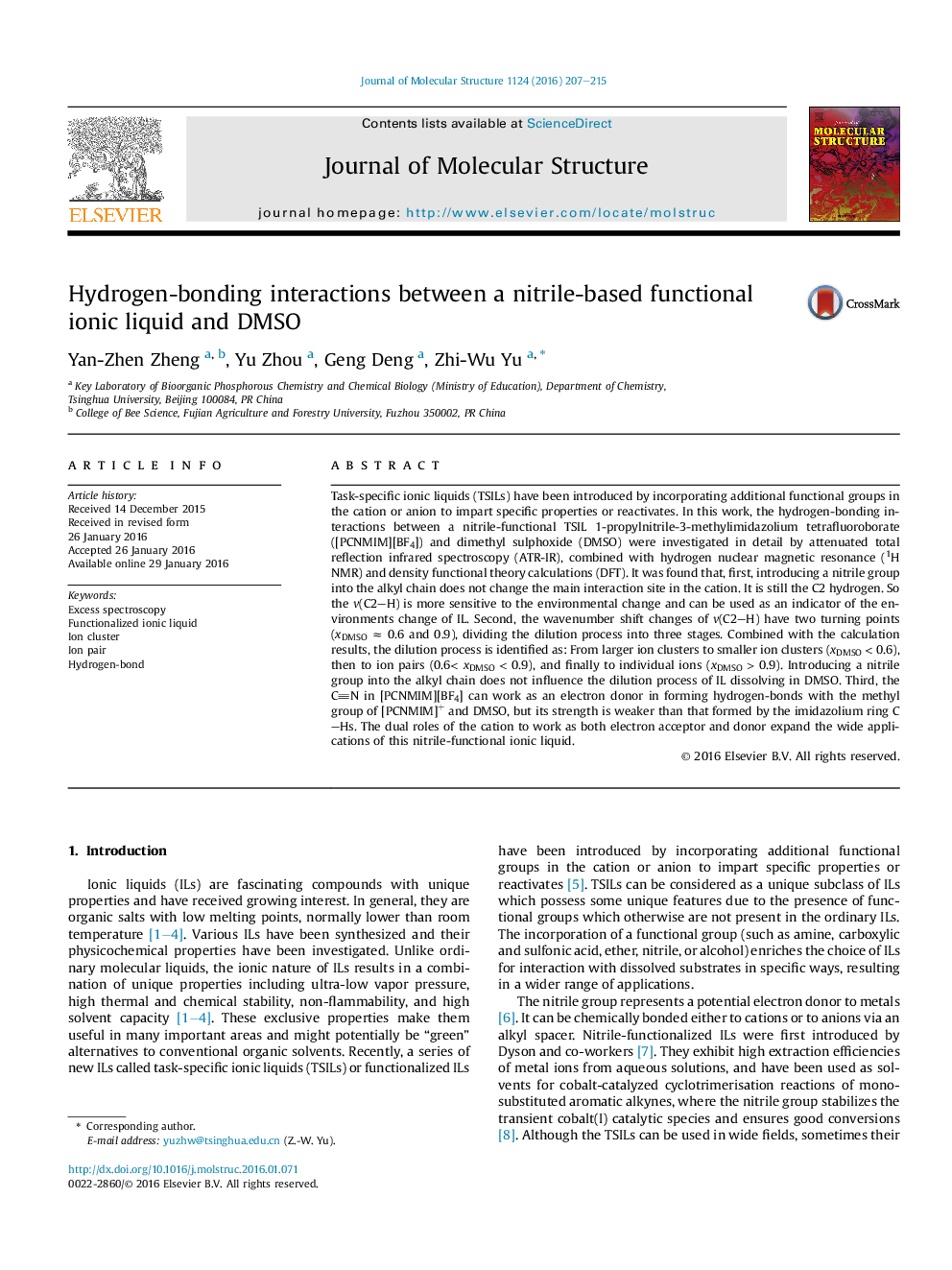| کد مقاله | کد نشریه | سال انتشار | مقاله انگلیسی | نسخه تمام متن |
|---|---|---|---|---|
| 1401070 | 1501693 | 2016 | 9 صفحه PDF | دانلود رایگان |

• It's first used excess spectra to investigate the interactions between [PCNMIM][BF4] and DMSO in the full concentration range.
• v(C2–H) is more sensitive to the environmental change and can be used as an indicator of the environments change of IL.
• The dual roles of the [PCNMIM]+ cation to work as both electron acceptor and donor.
Task-specific ionic liquids (TSILs) have been introduced by incorporating additional functional groups in the cation or anion to impart specific properties or reactivates. In this work, the hydrogen-bonding interactions between a nitrile-functional TSIL 1-propylnitrile-3-methylimidazolium tetrafluoroborate ([PCNMIM][BF4]) and dimethyl sulphoxide (DMSO) were investigated in detail by attenuated total reflection infrared spectroscopy (ATR-IR), combined with hydrogen nuclear magnetic resonance (1H NMR) and density functional theory calculations (DFT). It was found that, first, introducing a nitrile group into the alkyl chain does not change the main interaction site in the cation. It is still the C2 hydrogen. So the v(C2–H) is more sensitive to the environmental change and can be used as an indicator of the environments change of IL. Second, the wavenumber shift changes of v(C2–H) have two turning points (xDMSO ≈ 0.6 and 0.9), dividing the dilution process into three stages. Combined with the calculation results, the dilution process is identified as: From larger ion clusters to smaller ion clusters (xDMSO < 0.6), then to ion pairs (0.6< xDMSO < 0.9), and finally to individual ions (xDMSO > 0.9). Introducing a nitrile group into the alkyl chain does not influence the dilution process of IL dissolving in DMSO. Third, the CN in [PCNMIM][BF4] can work as an electron donor in forming hydrogen-bonds with the methyl group of [PCNMIM]+ and DMSO, but its strength is weaker than that formed by the imidazolium ring C–Hs. The dual roles of the cation to work as both electron acceptor and donor expand the wide applications of this nitrile-functional ionic liquid.
Schematic model of the transformation of the species in the dilution process.Figure optionsDownload as PowerPoint slide
Journal: Journal of Molecular Structure - Volume 1124, 15 November 2016, Pages 207–215